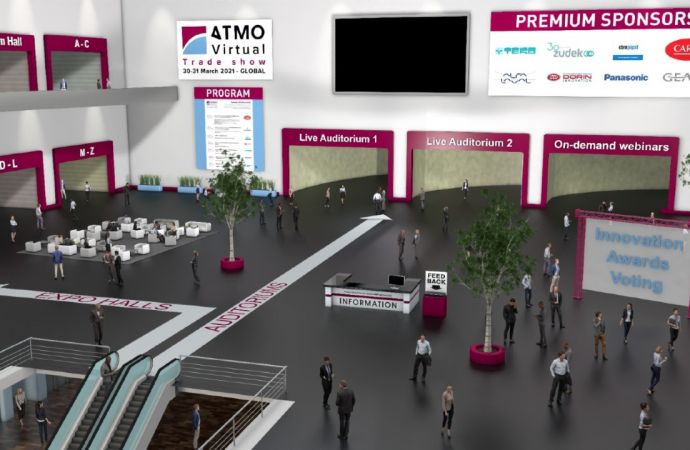In part 2 of ammonia21.com’s reporting on the low-charge and ammonia-carbon dioxide solutions showcased at the IIAR 2015 Conference and Exhibition we look at the technologies presented by Baltimore Aircoil, GEA Refrigeration Technologies, Isotherm and M&M Refrigeration. + PHOTOS

Baltimore Aircoil addresses energy, charge
Baltimore Aircoil (BAC), Jessup, Md., showcased its XE model of high-efficiency evaporative condensers for ammonia systems, which meet AHSRAE’s 90.1 standard as well as California’s Title 24 requirement for energy efficiency, said Huseyin Koca, sales engineer, refrigeration.
For low-charge ammonia systems, Baltimore Aircoil offers its Trillium Series hybrid air/evaporative condensers, which use as little as 13 pounds (5.9 kg) of ammonia. The microchannel condenser “uses so much surface area that you don’t need as much refrigerant,” said Koca.
For larger charge systems, Baltimore Aircoil has CXVR evaporative condensers, which can bring total charge under 10,000 pounds (4,536 kg), he said.
New GMX series of screw compressor packages from GEA
In addition, at the IIAR show, GEA Refrigeration Technologies, a German supplier, presented its new GMX series of screw compressor packages for industrial applications, with swept volumes of 335 to 618 CFM (cubic feet per minute). The four new packages replace their predecessors in the GM series, and feature a new capacity control.
The suction design on GMX models features a hot-gas-activated check valve to eliminate chatter and optimised for minimal pressure drop, greater tolerance for dirt and long service life, the company said.
M&M cuts ammonia charge in cascade system
M&M Refrigeration designs complete systems for industrial end users, about 75% of them ammonia-CO2 cascade models. We’re seeing more interest in ammonia-CO2 cascade to get the charge down,” said Ole Christensen, vice president, engineering.
In its cascade systems, the ammonia charge is 15% to 20% of what it would be in an ammonia-only system, Christensen said. In one 700,000-square-foot (65,032 m2) cold storage facility, the ammonia charge in a cascade system is less than 8,000 pounds (3,629kg) while the CO2 charge is 60,000 pounds (27,216 kg). “None of our CO2 installations have more than 10,000 pounds (4,536 kg) of ammonia,” he noted.
The M&M cascade systems typically features 2-3 temperature levels, one at -50°F for blast freezing, one at -25°F (-31.6°C) for freezing and one at +20°F (-6.6°C) for docks and cooler rooms.
The energy consumption of the cascade systems is about the same as two-stage ammonia system at -25°F (-31.6°C), but under that it uses 10% to 15% less energy. The first cost of the cascade system is also about the same as a two-stage ammonia system.
Meanwhile, Isotherm, Arlington, Texas, offers water-cooled condensers or liquid chillers for low-charge ammonia-CO2 cascade systems. “There’s an extremely limited charge of ammonia – 2-3 pounds (0.9-1.3 kg) per ton,” said David Boldrick, sales manager.
MORE INFORMATION
Related stories



_1522327086.png)

